Maintaining Balance

"Plants are easy to kill. I can make a moonscape for you, but I don’t think that’s what you want.” Dan Tekiela, Ph.D., Invasive Plant Extension Specialist at the University of Wyoming, sometimes starts conversations about weed control in rangeland and pastures with this startling idea. His goal is to shake up conventional thinking from land managers and applicators who seek his advice on controlling a particular invasive or noxious weed. He wants them to focus less on what they’re trying to kill and more on their long-term goals for the land.
“Most of the calls or emails I get about a weed problem,” Tekiela says, “come as: ‘I have plant X. What do I spray to get rid of it?’” Tekiela knows that’s not really what most land managers and applicators mean. “What they are actually interested in is preserving their valuable vegetation—for grazing or wildlife or other reasons,” Tekiela says. “The ultimate goal is restoring their land from the weed issue.”
When seen through the lens of “restoring land,” considerations about herbicide choices take a different perspective. A targeted approach that controls weeds but preserves desirable vegetation creates a healthier landscape, which also enhances natural competition against weeds and invasive species.
DuraCor® herbicide with Rinskor® active, just approved for use in 2020, includes the first new active ingredient (Rinskor) available for rangeland and pastures in nearly 15 years, providing a new tool for managing the balance of weed control and the preservation of desirable vegetation. In areas where many land managers and applicators had been using a combination of Milestone® herbicide and Tordon® 22K herbicide, applicators are starting to replace that mixture with DuraCor for three key reasons.
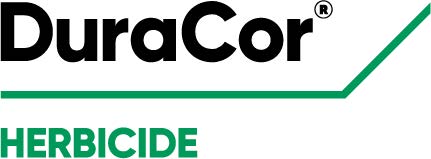
Like Milestone®, DuraCor® is safe on grasses, and an initial analysis of the effect of DuraCor on desirable forbs reveals a profile similar to Milestone1, as seen in the chart below. These results are preliminary, with analysis ongoing by field scientists with the Corteva Agriscience Range & Pasture team.
DURACOR DESIRABLE WILDFLOWER RESPONSE (65 SPECIES FROM 8 TRIALS)1
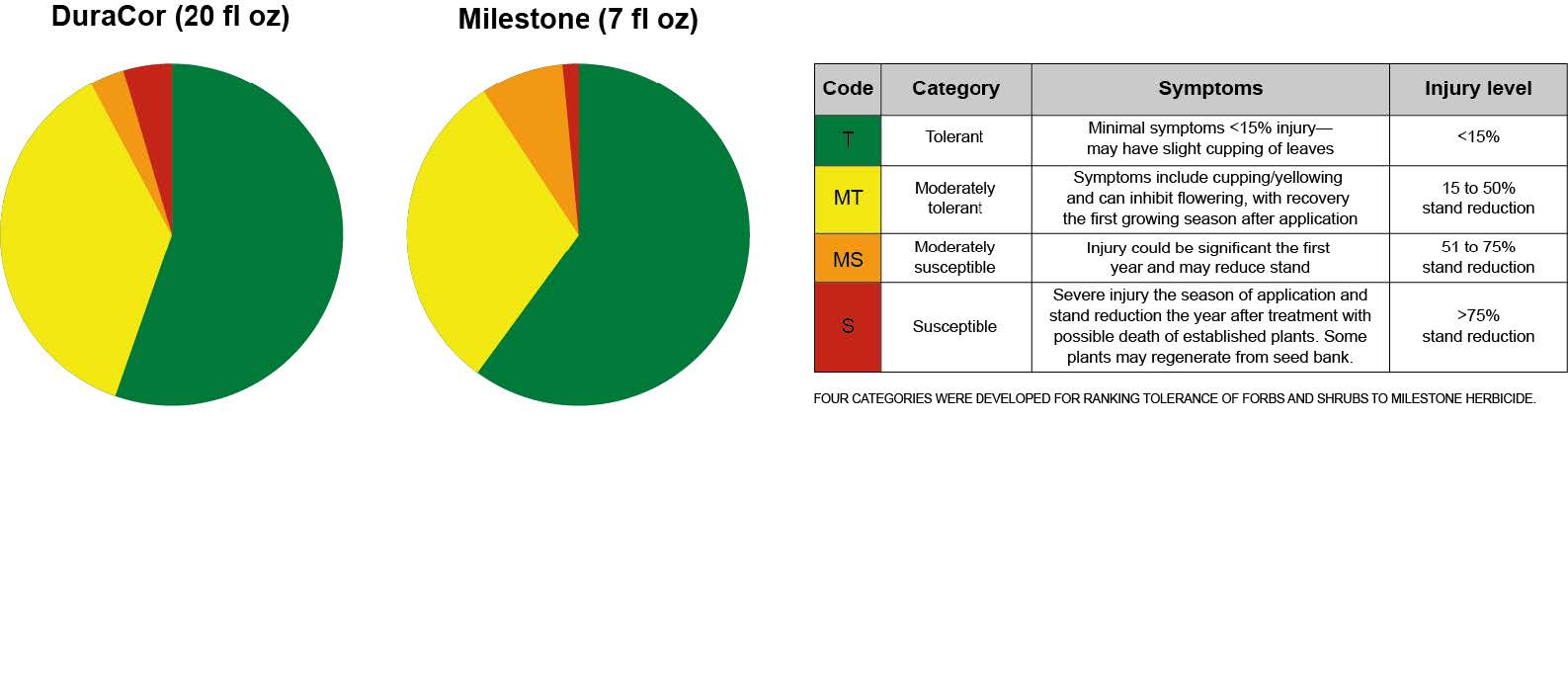
The selective activity and ability to help maintain desirable vegetation with DuraCor comes down to its chemical profile. DuraCor combines the active ingredient in Milestone1 (aminopyralid) with a unique and new class of synthetic auxin chemistry, Rinskor (florpyrauxifen-benzyl). Both chemistries are EPA Reduced Risk pesticides, and Rinskor earned the 2018 Green Chemistry Challenge Award from the American Chemical Society’s Green Chemistry Institute, which recognizes new processes or products that help protect public health and the environment.
NEW ARYLPICOLINATES
Rinskor® active is classified in the Herbicide Resistance Action Committee’s Group O category, which encompasses synthetic auxins. Within Group O, Rinskor is a member of the new arylpicolinates family of chemistry. Arylpicolinates are differentiated from other Group O synthetic auxins by several characteristics, including use rate, spectrum, weed symptoms, environmental fate and molecular interaction.
Rinskor attaches to a new binding site on plants, working in a way that’s totally different from any other Group 4 chemistry. Compared to auxins like 2,4-D ester and dicamba, Rinskor has significantly improved non-volatility characteristics and is classified as immobile because of its high sorptivity to soil. The Rinskor formulation also enables a lower use rate without sacrificing weed control.
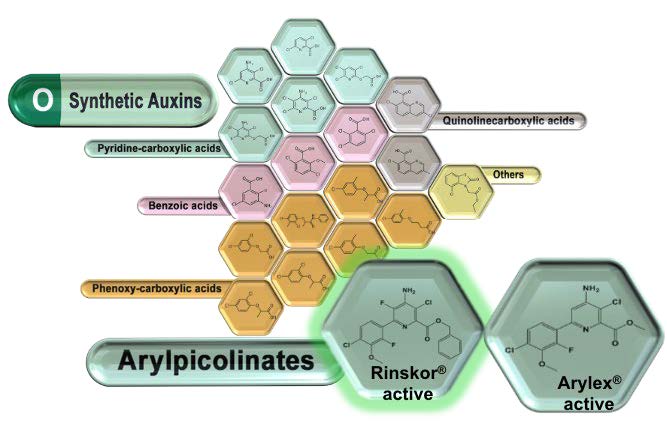
COMPARATIVE USE RATES
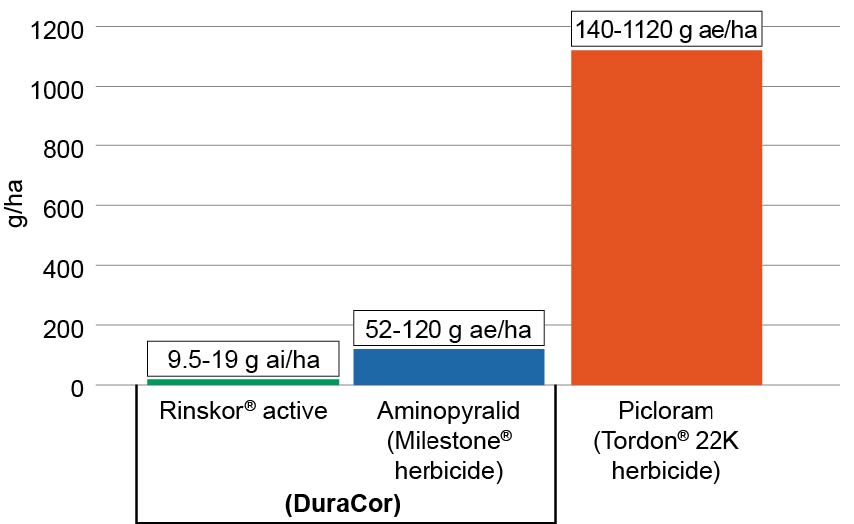
Although still a selective herbicide like Milestone®, DuraCor® has a broader spectrum, controlling nearly 50% more weeds than Milestone. DuraCor also demonstrates better activity on late-season curly dock, knapweed, annual and bi-annual thistles (including Canada thistle), buckhorn plantain, mullein and the carrot family (including poison hemlock). When used as a pre-emergent, DuraCor provides very good control on mustard species and Russian thistle as well.
WEED SPECIES CONTROLLED
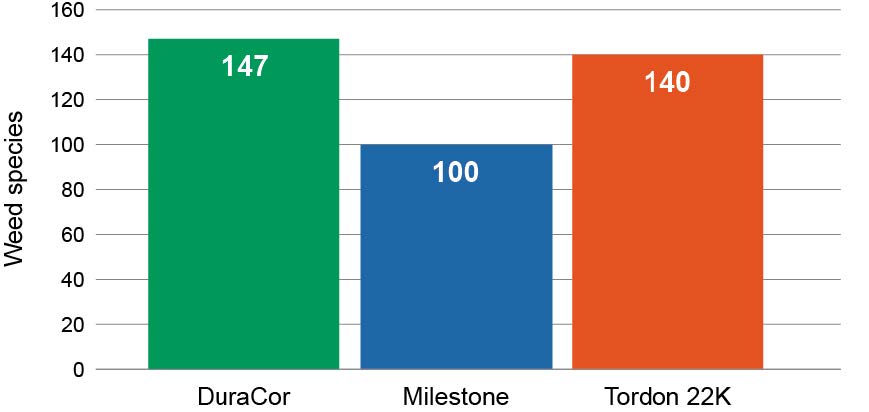
CURLY DOCK CONTROL (30 DAYS AFTER TREATMENT)1
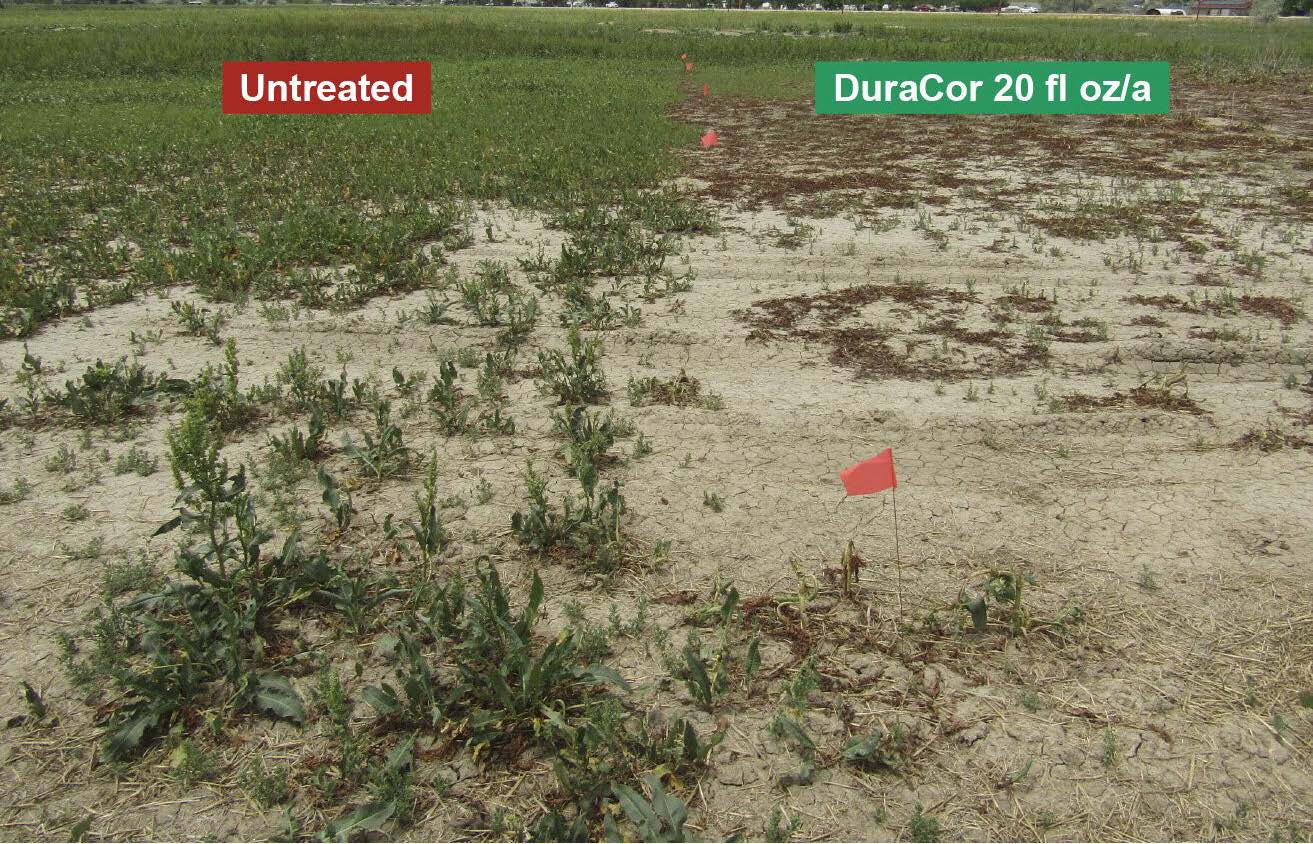
COMMON MULLEIN CONTROL 1
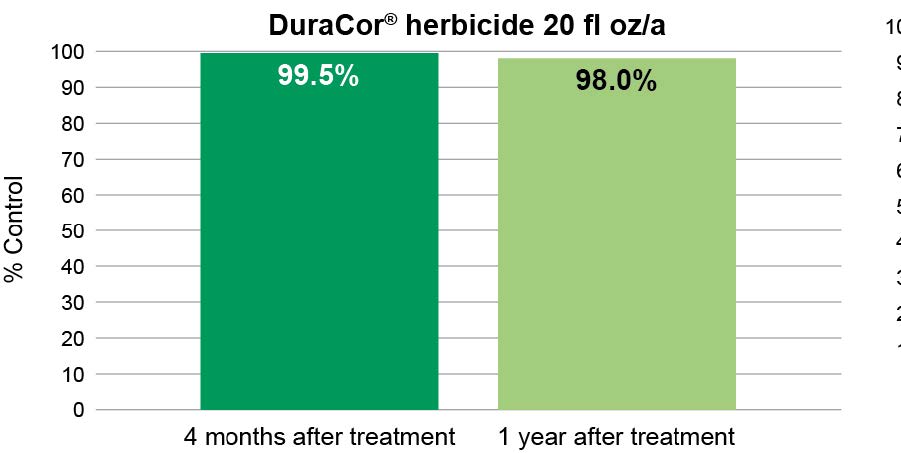
COMMON MULLEIN CONTROL (30 DAYS AFTER TREATMENT)1
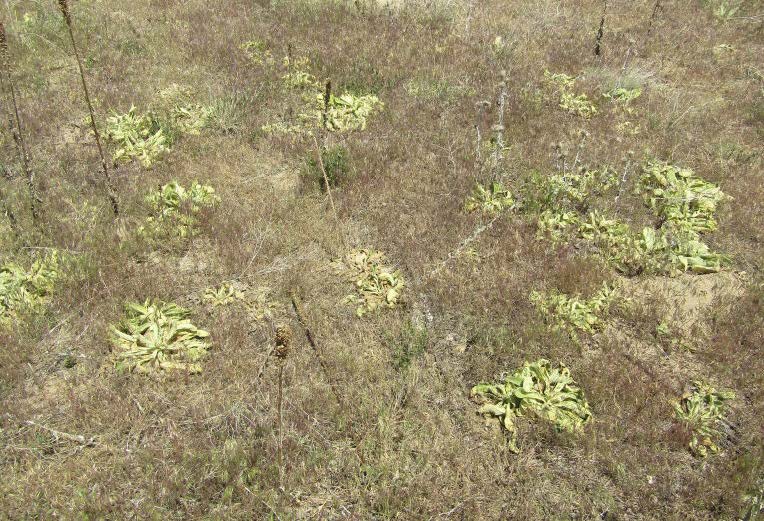
COMMON MULLEIN CONTROL (1 YEAR AFTER TREATMENT)1
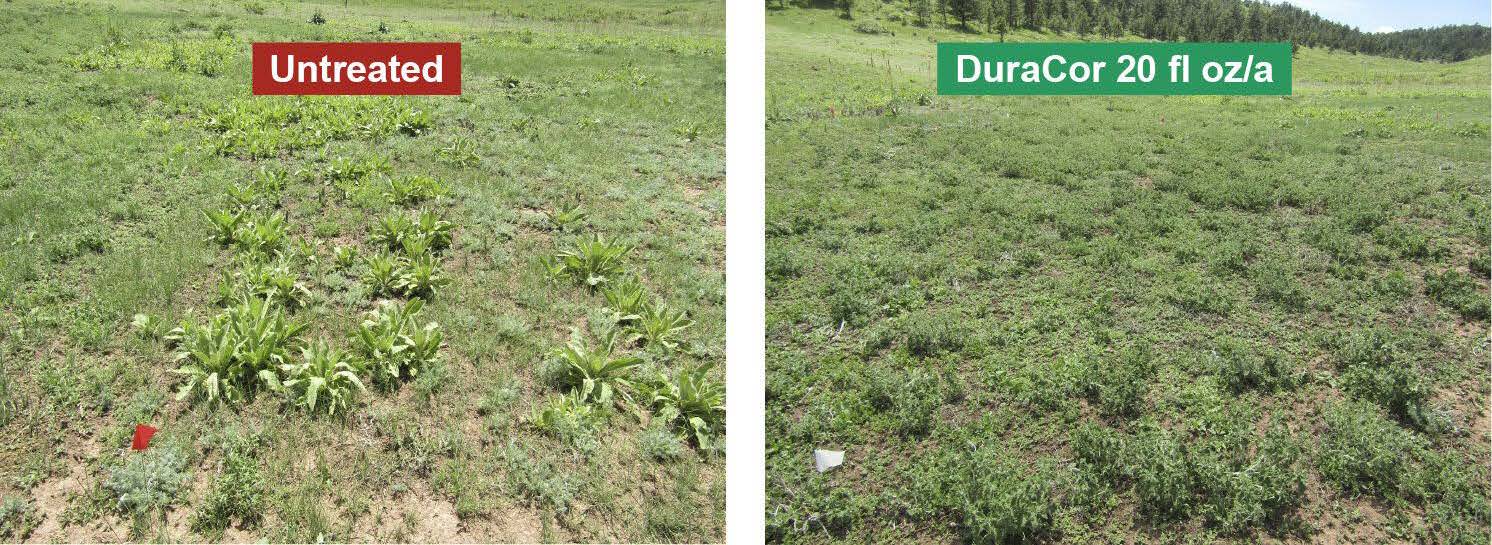
In cases where a wider spectrum of use is needed, DuraCor® herbicide can be tank-mixed with 2,4-D, Escort XP herbicide and Telar XP herbicide. In select cases, DuraCor can also be tank-mixed with Tordon® 22K herbicide, although this use is expected to be minimal, as the effects of DuraCor should decrease the need for Tordon 22K in most situations, enabling enhanced protection of desirable grasses and forbs.
When it comes to avoiding the moonscapes Dan Tekiela describes, applicator forgiveness can be an important factor. While applicators always strive to avoid overlap, errors do happen. Because DuraCor is active at lower concentrations, applicators are less likely to see damage to pasture areas where overlap occurs, particularly compared with the visually obvious damage common in overlap application of Tordon 22K. Overlap areas where desirable vegetation is destroyed can become disturbed landscapes, and therefore particularly hospitable to weeds and invasives, which are genetically predisposed to thrive in less-than-ideal conditions.
Like Milestone® herbicide, DuraCor is approved for use in riparian areas and can be applied up to the water’s edge. This gives applicators a new option for controlling tough weeds in these environments where Tordon 22K cannot be used. DuraCor is also safer to use around trees than Tordon 22K.
DuraCor can be applied aerially, and applicators are reporting less driftable fines and odor. As with Milestone, DuraCor does not have any grazing restrictions, so application timing can be based on what’s right for the land management strategy, without worry about animal grazing schedules.
Quick comparison guide
DuraCor® • Milestone® • Tordon® 22K herbicides

For researchers like Dan Tekiela, the ultimate goal for weed control is to support a biodiverse environment good for grazing animals, wildlife and the whole ecosystem. Finding the right approach involves multiple factors. “We’re working in complicated systems in rangeland,” notes Tekiela. “It’s not always a succinct, simple answer, but the more tools you can utilize that act as many little hammers in a management situation, the better.” As active ingredient and formulation options expand—such as with the introduction of DuraCor—land managers and applicators are finding their toolboxes are getting a little deeper with ways to keep landscapes healthier and more diverse.
1 Corteva Agriscience. Field observations. Data on file.
2 Corteva Agriscience. Product comparisons. Data on file.
Tordon 22K is a Restricted Use Pesticide.
Under normal field conditions, DuraCor® is non-volatile. DuraCor and Milestone have no grazing or haying restrictions for any class of livestock, including lactating dairy cows, horses (including lactating mares) and meat animals prior to slaughter. Label precautions do apply to forage treated with DuraCor and Milestone and to manure and urine from animals that have consumed treated forage.
When treating areas in and around roadside or utility rights-of-way that are or will be grazed, hayed or planted to forage, important label precautions apply regarding harvesting hay from treated sites, using manure from animals grazing on treated areas or rotating the treated area to sensitive crops. Label precautions apply to forage treated with Milestone and to manure from animals that have consumed treated forage within the last three days.
DuraCor and Milestone are not registered for sale or use in all states. Contact your state pesticide regulatory agency to determine if a product is registered for sale or use in your state. Always read and follow label directions.
™ ® Trademarks of Corteva Agriscience and its affiliated companies. © 2020 Corteva.
Sharing innovative research, success stories and tips with invasive plant managers.